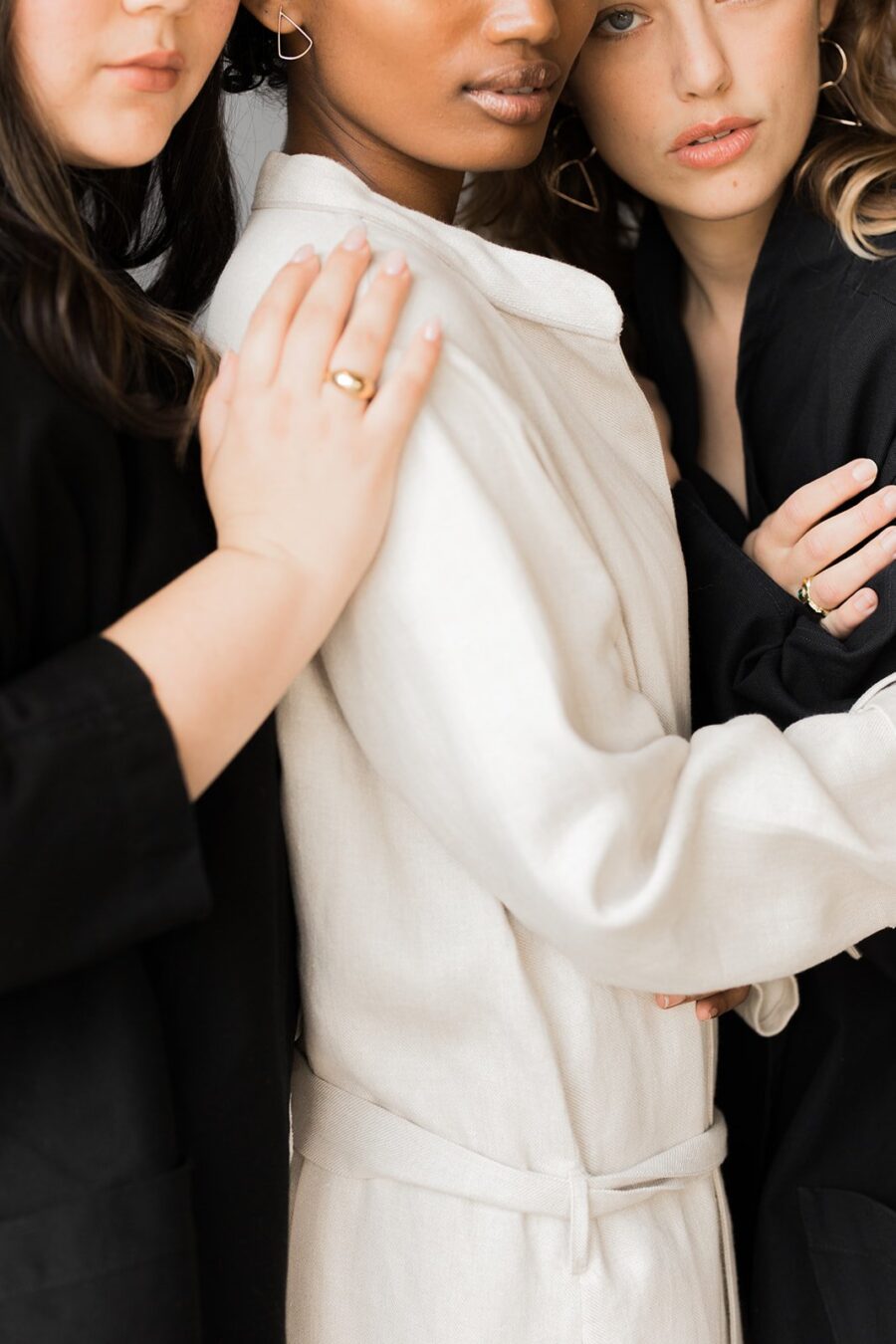
Confessions Of A Bad Minimalist
The Appeal Of Minimalism
I first learned about minimalism after watching Minimalism: A Documentary About the Important Things on Netflix in 2016. At the time, many of my friends who had seen the documentary wrote it off as drastic or unrealistic, but I was fascinated by the the sense of simplicity and peace it seemed to bring to people’s lives.
Just a day after watching the documentary, I conducted a massive closet overhaul and packed my car with trash bags full of old clothes to donate to my local thrift store. I kept the remainder of my clothes on a clothing rack at the foot of my bed, and all of my shoes right beneath. My closet was essentially empty, save for a few coats I pulled out only on rainy days. I dove headfirst into the minimalist lifestyle and had no intention of turning back.
“Minimalism became somewhat of a personality trait of mine. You couldn’t get me to shut up about tiny houses or what was on my 30-Day List.”
As a follow-up to the documentary, I read Do Less: A Minimalist Guide to a Simplified, Organized, and Happy Life, which taught me some very practical ways to implement minimalism into my work life, personal life, and finances. I learned how to make a 30-Day List, which is a system of waiting 30 days to purchase an item of clothing, a practice meant to minimize impulse purchases. Minimalism became somewhat of a personality trait of mine. You couldn’t get me to shut up about tiny houses or what was on my 30-Day List. My introduction into minimalism ultimately taught me the importance of quality over quantity, and played a huge role in my decision to stop buying fast fashion. Unfortunately, my fervent dedication to minimalism was short-lived.
Fast forward three years later, and I still hold the title of “the minimalist” amongst many of my friends. And while I do have a smaller closet than your average 22-year-old, I definitely have fallen from my young minimalist ways. I’ve ditched the IKEA clothing rack and now have a closet and dresser, which are full to the brim. My shoes are double-stacked on a rack stuffed at the bottom of my closet, and I usually keep a pair or two at the door near the entrance of my apartment. I don’t have a 30-Day List, and quite honestly, I could never see myself living in a tiny home.
Though cutting out fast fashion has minimized my closet significantly, I’ve found a new beast to replace my shopping habit: thrifting. I’ve made a pretty bad habit of buying an item secondhand because it’s so cheap, wearing it only once or twice and then exchanging it at Buffalo Exchange for store credit. It has become this vicious cycle that never ends. While this cycle of buying and re-selling is not necessarily harmful to people or the environment, I recognize that this practice completely misses the mark of the meaning behind a minimalist lifestyle. In many ways, I have fallen into a similar trap with buying secondhand that I fell into when I used to shop fast fashion—buying items of clothing as a means of being on-trend rather than purchasing quality garments I really love that will last.
“The goal is not necessarily to be a “minimalist” in the most drastic sense of the word, but rather to shape my purchasing habits with the mindset of one.”
As I’m beginning to think about what I want my Spring/Summer wardrobe to look like, I am hoping to re-adopt some of that dedication to minimalism that I once had. Yet, this time around, I want to take a more realistic approach. The goal is not necessarily to be a “minimalist” in the most drastic sense of the word, but rather to shape my purchasing habits with the mindset of one.
I think the most important thing when it comes to minimalism (and conscious living in general) is honesty. I’m beginning to be more honest with myself about some of my shopping habits that may not be serving me, but I think it’s also helpful as a community to be a bit more honest with each other.
First, I asked two of our editors to share about their experiences with minimalism. Both expressed being appreciative of the values of minimalism, but have found ways to make space for those values in their own unique ways:
What I do not like is the label of being a “minimalist.” It feels restricting and like there are confined rules.
“I love the values of minimalism—quality over quantity, taking care of your things so that they will last, avoiding clutter, keeping what brings you joy in your home (thank you Marie Kondo). I even love the minimalist color palette of simple, natural color tones, monochromatic-inspired looks, and vintage denim. What I do not like is the label of being a “minimalist.” It feels restricting and like there are confined rules (I am not a big fan of rules). I am very much someone who allows for fluidity in the things I bring into my life—if it aligns with my values and is good for my life and the world as a whole, I welcome it. I do my best to stick to these things but I’m only human and by no means perfect. Minimalism feels like perfection and that’s challenging for me.” — Courtney Jay Higgins, Associate Editor
I still live and consume with intention, but I don’t allow myself to restrict myself in those ways anymore
“I became an avid minimalist years ago, and edited down my lifestyle to the very basics. I went too far though: I stopped cooking complex meals that I loved, stopped using skincare products that made me feel good, and got rid of the colorful garments that brought me so much joy. Eventually, it became more harmful than helpful to my wellbeing. I found that strict minimalism honestly isn’t right for me—I still live and consume with intention, but I don’t allow myself to restrict myself in those ways anymore.” — Emily Torres, Managing Editor
Next, I reached outside the walls of The Good Trade, to hear about more experiences with minimalism from people within our community. I took to The Good Trade Instagram stories and posed this question:
What’s been the most difficult part of maintaining a minimalist lifestyle for you?
For many people, maintaining minimalism has been difficult because of finances:
“Living paycheck to paycheck makes me second guess donating/purging things I might ‘need’” – K
“Money $$$$” – A
“Buying high quality pieces and products on a low budget.” – B
“Wanting to support all the ethical brands I love, and not being able to because budget! And slow living.” – S
having friends and family who don’t practice minimalism makes it difficult:
“My in-laws give us stuff all the time!” – M
“Finding a middle ground with my partner who thinks we need EVERYTHING.” – A
“Feeling/seeming judgy when talking about the lifestyle.” – C
“People sending gifts, having gifts, inheriting an entire estate!” – V
the negative role social media and culture plays in minimalism:
“Battling materialistic comparison. Social media is especially counter-minimalist.” – O
“Seeing Instagram Influencers constantly get new gifted products. It makes me want.” – L
“Living in a culture that’s constantly encouraging you to buy!” – T
“Consumerism is deeply engrained!” – S
cold weather:
“Avoiding buying (lots of!) additional clothes for Canada weather. We love having a small closet but it is challenging with such extreme seasons.” – E&R
Feelings of guilt or frustration:
“Feeling shame in sometimes choosing the not minimalist thing out of convenience.” – S
“The frustration of how long the process can be! Learning to be patient and celebrate small wins.” – H
“Applying it to my mindset! Less cluttered mind = more room for meaningful things!” – D
I’ve come to the conclusion that minimalism is an incredibly difficult lifestyle to maintain, due to a number of reasons including societal expectations, financial barriers, and family structures. However, the values of minimalism are still important for those seeking to live more conscious lives. Minimalism looks different for everyone, and I think that’s the beauty of it. It’s important that we all do the very best that we can, giving ourselves grace along the way.
And remember: it’s okay to be a bad minimalist sometimes.
RELATED READING
Celeste M. Scott is the Social Media Coordinator at The Good Trade. She is a writer and photographer who is passionate about film and Internet culture. She can often be found sifting through the racks at her local Savers. You can find her work on her website and Instagram.
